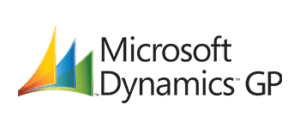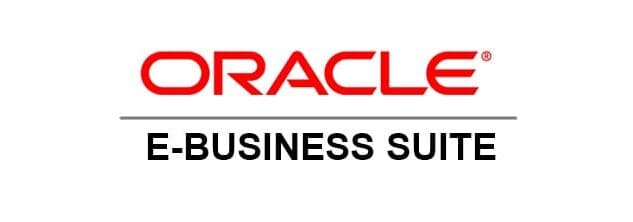As finance teams modernize and scale, integrating enterprise resource planning (ERP) systems with other critical tools, especially accounts payable (AP) automation platforms, is essential. While ERPs serve as the financial backbone for many organizations, they often fall short in optimizing day-to-day workflows. That’s where integration comes in.
By connecting your ERP with AP automation, businesses can eliminate manual processes, improve data accuracy, and gain real-time visibility into financial operations. In this article, we’ll explore how ERP integrations work, why they matter, common methods of implementation, and the key benefits they unlock — especially for finance and AP teams looking to operate more efficiently and strategically.
Key Takeaways
- Integrating AP automation with your ERP boosts efficiency, accuracy, and visibility across invoice processing and payments.
- Common integration methods — direct API, file-based, and middleware — each offer distinct pros and cons depending on system complexity.
- A well-implemented ERP + AP automation setup empowers scalability, enhances vendor relationships, and strengthens data governance and compliance readiness.
What is ERP integration?
Enterprise resource planning (ERP) refers to a software that allows companies to connect and manage various parts of their organization. They are commonly used within the finance department, including accounts payable, accounts receivable, and purchasing. The tool’s capabilities also extend into other areas to help companies manage inventory and customers, and enhance communication between departments and team members.
How does ERP integration work?
ERP integration connects your ERP system with other business systems like accounts payable (AP) automation, CRM, procurement, and more. This allows data to seamlessly flow between systems automatically syncing invoices, payments, customer records, and financial data without the need for manual input. Depending on your tech stack, integration can be achieved through direct APIs, file-based transfers, or middleware platforms, each offering different levels of real time sync, flexibility, and scalability.
Why is ERP integration important?
ERP integration is essential for organizations looking to modernize finance operations, streamline workflows, and gain deeper insights into their business. Below are the top 5 benefits of ERP integrations:
- Enhanced efficiency and productivity
- Better decision making
- Costs savings and increased ROI
- Improved customer experience
- Enhanced security
1. Enhanced efficiency and productivity
ERP integration eliminates duplicate data entry and streamlines manual processes by automating data transfer across systems. This reduces errors, speeds up workflows, and frees up teams to focus on higher value tasks. It’s especially impactful in areas like AP, where integration can simplify invoice approvals, payments, and recordings.
2. Better decision making
ERP integration enables faster access to real time information across departments, eliminating data silos and enabling a more comprehensive view of business operations. With financial, procurement, and customer data all flowing into a centralized system, finance leaders and stakeholders can generate more accurate reports, leverage advanced analytics, and uncover actionable insights.
3. Cost savings and increased ROI
By reducing manual workloads and IT overhead, ERP integration helps cut costs across departments. It also improves data accuracy and operational efficiency, which contributes to faster returns on technology investments, especially in areas like finance automation. Measurable ROI often appears in year one.
4. Improved customer experience
ERP integration supports faster order fulfillment, better inventory accuracy, and smoother communication between teams. This results in a more responsive and personalized customer experience from timely invoicing to better support and streamlined purchasing.
5. Enhanced security
Integrated systems centralize data access and enforce role-based permissions, reducing the risk of unauthorized access or data breaches. Leading integration platforms also include audit trails and encryption protocols to help maintain regulatory compliance and secure sensitive financial or customer information.
What is an ERP’s role in AP?
ERPs are powerful tools: they serve many teams and offer wide functionality. They are especially critical for accounting teams; so much so that 89% of companies view them as a necessity for the department. This is because ERPs serve as the system of record for all financial operations. They manage the chart of accounts, maintain the master vendor file, record transactions to the general ledger, post and track invoices, reconcile payments, and provide the foundational data that supports accurate financial reporting and compliance.
Unfortunately, ERPs aren’t typically configured in a way that caters to the specific needs of AP staff. While some ERP systems offer select automation capabilities, their AP modules often lack flexibility and user-friendliness—especially when it comes to invoice capture, approval workflows, and modern payment methods. That’s why many AP teams adopt an AP automation tool to supplement their ERP and unlock added efficiencies. These tools are designed to integrate with ERP platforms like NetSuite, QuickBooks, Sage Intacct, and Microsoft Dynamics to enhance AP functionality without disrupting existing accounting processes.
Common ERP integration methods
When companies connect their ERP to other systems like accounts payable (AP) automation, CRM, or other procurement tools they typically rely on one (or a mix) of these integration approaches. Understanding the basics can help you choose an approach that fits your tech stack, budget, and long-term plans.
- Direct integration (Point to point)
- File-based integration
- Middleware or IPaaS (Integration Platform as a Service)
1. Direct integration (Point to point)
A straightforward, direct connection between your ERP and another system. For example, your AP automation platform syncs directly with your ERPs vendor records, invoice data, and payment status.
When it works best: This method is common for small to mid-sized businesses with a single ERP. It’s simpler to maintain when you don’t have dozens of systems to connect.
Considerations: As your ecosystem grows, managing multiple one to one connections can get complicated and harder to scale.
2. File-based integration
A flexible method that transfers data between systems using flat files (like CSVs) on a schedule. File-based integration is especially useful for legacy ERPs that don’t have robust APIs, or when you need to connect multiple versions of an ERP across entities.
When it works best: This approach works well when you want to move large batches of data reliably, but don’t need a real time sync for every detail.
Considerations: It requires disciplined data validation and reconciliation to avoid mismatches and errors.
3. Middleware or IPaaS (Integration Platform as a Service)
A dedicated integration layer either on-premise middleware (like an Enteprise Service Bus) or a cloud-based IPaaS that acts as a central hub for moving data between your ERP and other applications.
When it works best: This is more common for large enterprises with multiple systems, complex workflows, or global subsidiaries that need to standardize how data moves between ERPs, CRM, BI tools, and more.
Considerations: Middleware and IPaaS solutions can be costly and add technical complexity. They often require more IT oversight and planning compared to simpler direct or file-based connections.
Challenges with ERP Systems in AP
While extremely valuable, ERP systems can come with a number of challenges for AP teams. These include:
Complicated Design
ERPs are extremely intricate systems. The fact that they are highly customizable drives a lot of value for organizations, but it also makes it difficult for staff to configure the system. This is why many larger companies allocate resources specifically to help manage the ERP’s intricacies, challenges, and new integrations. Smaller organizations that lack the available funds to finance a similar role often turn to outside consultants to help. This can quickly become expensive and often creates barriers for teams that want to tailor their ERP to better fit the needs of their organization.
Complex Migrations
ERP migrations are complex and extensive projects. The largest hurdle is that organizations must first ensure they can accurately capture data from one system to another while not interrupting current workflows. This is not a quick process. The typical migration timeline can be six to 18-months, depending on the size of the company and the complexity of its systems.
ERP migrations are tedious, but there are several reasons a company may choose to make the switch. Most commonly, companies outgrow the functionality of their current ERP and opt for a more mature solution. Alternatively, during an acquisition, organizations using different ERPs often need to establish new systems to align data from disparate systems. Mergers are another common prompt for ERP migrations, this occurs when two separate teams must centralize their workflows onto the same set of tools.
With many companies considering upgrading or changing their ERP, it’s important for firms to carefully plan their migration – else they risk major headaches along the way. One way to mitigate this is to create a list of all current ERP integrations, to make sure that the new ERP tool can support them.
Linking Multiple Systems
Although it’s uncommon, ERP challenges can arise when larger organizations choose to have more than one ERP for employees. For example: There are ERPs designed specifically for manufacturing workflows and processes. As a result, the entity or division of a company that focuses on that side of the business may choose to leverage a different ERP from the rest of the organization. Consolidating ERP systems in this case would force the team to forfeit important ERP functionalities, so it’s easier to leave the two ERP systems. Using disparate ERP systems can create reporting challenges and communication gaps for team members, so teams should weigh the benefits versus the costs when deciding whether or not to use multiple ERP systems.
Limited Functionality for Specific Departments
While ERPs are useful tools for driving efficiencies, their cross-organizational functionality also comes at a cost. With ERP systems being leveraged across various departments and roles, it’s difficult for ERPs to deeply deliver on any single department’s needs. For example, back office roles like those in Accounts Payable often use an ERP in their day-to-day tasks but the tool is not configured in a way to streamline their work. This is why many teams supplement their ERP system with an AP automation tool.
12 Advantages of Combining Your ERP with AP Automation
While ERPs serve as the system of record for finance teams, they aren’t always optimized for the day to day needs of accounts payable. Integrating an AP automation solution with your ERP helps bridge that gap ensuring data flows seamlessly between platforms, eliminating repetitive tasks, and unlocking new opportunities to streamline processes.
Below are twelve key advantages companies can gain by combining their ERP system with a purpose built AP automation platform.
- Efficiency gains
- Better AP analytics
- Virtual card rebates
- Streamlined invoice approval workflows
- 99.5% invoice accuracy
- Powerful scalability
- Stronger vendor relationships
- Continuous two-way sync
- Real time financial visibility
- Support growth through multi-entity and multi-system flexibility
- Stronger compliance and security controls
- Strengthen data governance and regulatory compliance
1. Efficiency gains
CFOs face many challenges today, including an impending recession and inflation. Senior finance leaders must be agile in their approach to these challenges and aware of their effects on the bottom line. Many finance executives are turning to digital transformation as a means to drive efficiencies across back-office functions, reduce human error, and minimize late payments. This is especially pertinent for AP teams, which surveyed companies considered the most important back office function to automate.
2. Better AP analytics
Teams have historically not been able to use invoice data until it’s been posted to their ERP. This delays reporting accuracy and muddies leadership’s view into the firms’ financials. Now, MineralTree’s advanced AP analytics and reporting capabilities sync invoice data immediately upon invoice capture. As a result, finance professionals can get a more accurate understanding of the financial health of their companies.
Additionally, AP teams can pull a variety of reports to be more strategic, positively affecting a company’s bottom line. MineralTree customer, Simple Mills has leveraged these capabilities to make more informed decisions for their organization. “We look at what could happen if we extend payment terms or ask for early-pay discounts with certain suppliers,” said Maddy McGannon, Simple Mills’ Controller. “MineralTree gives us the insight to analyze our payment data and use it to improve business decision making.”
3. Virtual card rebates
According to our recent State of AP Report, time continues to be a hurdle for organizations trying to enroll vendors in virtual cards. However, this payment method can offer numerous benefits, including an increase in revenue through rebates. By using MineralTree’s service SilverPay, Quartzy noted that they were on track to earn $100,000 in rebates over the calendar year. “SilverPay allows us to contribute something to the company’s bottom line, which is not always an option in accounting,” said Bheem Bhatia, Vice President of Finance at Quartzy.
MineralTree’s payment services offerings help companies register more vendors in virtual cards to maximize their rebates and help the bottomline.
4. Streamlined invoices approval workflows
AP automation makes invoice approvals easy. AP staff no longer need to manually send reminders to decision makers regarding invoice approvals or payment authorizations. With MineralTree, all invoice approvals are done via email without a log-in to the ERP or the AP automation tool required. In cases of approval delays, our system automatically sends out reminder emails to ensure payments are made on time. AP automation also makes invoice approvals cheaper for teams by minimizing the need for multiple ERP licenses. ERP systems typically charge individual user license fees, making it expensive for teams with multiple invoice approvers. MineralTree’s AP automation tool allows unlimited users so that staff can easily review and approve invoices – without an ERP license.
5. 99.5% invoice accuracy
AP automation tools often save time for finance teams by automating the invoice capture process. This minimizes human error and duplicate payments, saving the team both time and money. At MineralTree, we combine the power of OCR technology with human review, so teams can extract line item information from each invoice with up to 99.5% accuracy. OCR alone will lead anywhere from a 60-80% accuracy rating.
With automated OCR technology, companies typically find errors in one out of every three invoices. Alternatively, human review on its own is often a much slower process, resulting in unpredictable invoice approval delays. By combining these two systems, MineralTree can turn invoices around in 24 hours or less without sacrificing accuracy. While most ERPs and AP automation solutions are limited in what file types they can capture, our solution accepts 19 different file formats.
6. Powerful scalability
The right AP automation tool should be able to grow with your business and ERP. MineralTree’s platform is ERP agnostic, allowing our tool to integrate seamlessly with your ERP system, even as business needs change. Additionally, we have no limits on the number of users, transitions or companies. If an organization moves from 500 to 50,000 invoices a month, they may outgrow their ERP system, but they can still use MineralTree.
7. Stronger vendor relationships
Vendor relationships can be highly sensitive. Tarnished relationships can make a real impact on the bottom line. For healthcare, these are particularly important since there are a smaller number of suppliers. According to our State of AP Report, 75.3% of healthcare organizations either agreed or strongly agreed that vendor relationships rose in importance over the past year.
One of the best ways to maintain relationships is through on-time payments. This is another area where an AP automation tool can help. With MineralTree, companies can pay suppliers in their preferred format without adding additional workflows and processes. Additionally, AP teams can set payment dates directly into the MineralTree system to ensure vendors receive their funds on time every time.
8. Continuous two-way sync
With ERPs that support API integration, MineralTree offers a continuous two-way sync. If information is updated in the ERP, it is automatically updated in our AP automation platform within minutes. Other tools may offer this type of integration, but one direction may be faster to update than the other which creates data discrepancies. Alternatively, not all information captured in the ERP may get transferred. For MineralTree, this capability is a true bi-directional sync.
As a result, your ERP remains the system of record across your organization and your AP tool also reflects the latest data. As Christine Hester from Affinity Dental Management noted, “MineralTree’s two-way sync capabilities with QuickBooks have eliminated much of the manual data entry that was taking a toll on productivity, while ensuring that QuickBooks remains our system of record.”
9. Real time financial visibility
Integrating AP automation with your ERP creates a near real time feedback loop between invoice data, approvals, and payment status. This allows financial leaders to make informed decisions faster, from managing working capital to tracking burn rates. With up to date visibility into payables, organizations can forecast cash flow more accurately and reduce surprises at month-end close.
10. Support growth through multi-entity and multi-system flexibility
As businesses scale – expanding into new regions, acquiring other businesses, or launching new brands, their AP process must keep up. Managing multiple business entities means juggling separate accounting rules, approval chains, and payment processes. The right AP automation setup allows finance teams to manage separate legal entities within a single interface, while still maintaining control and visibility over each one. It also supports integration across multiple ERP systems, which is particularly helpful during transitions, mergers, or when different departments use different tools.
11. Flexible integration across ERP environments
Not every organization uses a single ERP. Some maintain legacy systems in certain business units, while others are moving toward cloud-native platforms. In many cases, these ERPs operate across hybrid or multi-cloud environments, making integration efforts more complex and requiring secure, consistent data exchange across cloud and on-premise systems. An effective AP automation platform is designed to be ERP-agnostic — offering prebuilt or customizable integrations across different systems. This means you can connect your AP process to a range of ERPs without rebuilding workflows from scratch, ensuring consistency in how invoices are captured, approved, and paid, no matter which ERP they originate from.
12. Strengthen data governance and regulatory compliance
As AP processes become more interconnected through ERP integrations, ensuring compliance with regulatory frameworks (like SOX or GDPR) becomes more important. Leading AP automation platforms support this by maintaining secure data transfer, enforcing role-based access, and providing full audit trails. This safeguards your sensitive financial data while simplifying internal audits and reporting obligations.
Steps to Integrate AP Automation into Your ERP System
There are two types of integrations offered by MineralTree:
Direct APIs:
The actual ERP integration with a direct API typically takes place over a 30-minute call with the system admin. We create the company in our solution and the admin simply uses their credentials to establish the sync between MineralTree with their ERP.
The initial migration of all data takes place overnight, so servers don’t get overloaded. At MineralTree, we have API integration capabilities with Xero, QuickBooks, Great Plains, Sage Intacct, Oracle EBS, and Netsuite Oracle.
UC Integration:
That central location, known as an SFTP site, would be built by MineralTree. Our team collaborates with an IT member on the client’s team to get this implemented. We then test the site to ensure that the information is mapping accordingly between the two systems.
Check out our Popular ERP Integrations
ERP Integration Case Studies
Forge Migrates to Netsuite, but Keeps MineralTree
Forge Biologics focuses on life-changing gene therapies. As a result of their technologies, their company grew from 30 employees to 200 over an 18-month period. When investigating AP automation partners, they knew that they would be migrating from QuickBooks to Netsuite. “MineralTree offered proven APIs to both QuickBooks and NetSuite, so we knew we wouldn’t waste a lot of time and effort reconnecting the systems once we made the switch,” said Steve Goden, SVP of Finance and Operations.
The process of integrating MineralTree could have been complicated by this migration. However, the process remained seamless since our AP automation tool was designed to accommodate both platforms easily. Jennifer Kelly, Senior Director of Accounting and FP&A noted that, “the official cutover to using MineralTree with NetSuite was painless and worked right away. What was great was that we still had access to old invoices and data, so we could always go back to them if we had any questions.”
MTB Management Modernizes Its Approach to AP
MTB Management is a fast-growing Taco Bell franchise, growing from eight to 12 locations since 2020. Due to its growing business operations, they deployed MineralTree’s TotalAP platform across all of its quick-service restaurants (QSRs). Each store had 20-30 vendors, including suppliers who were specific to certain locations. Through MineralTree, MTB Management now manages each of its locations as a separate entity, while syncing all the relevant information to QuickBooks. This powers their team to continue scaling the business while effectively managing vendor relationships.
MTB Management Manages Multi-Entities on MineralTree with Quickbooks Desktop from Powered by MineralTree on Vimeo.
Final Thoughts
MineralTree’s AP automation tool drives more value out of your ERP system, while ensuring that it remains the system of record. With our highly-rated product, AP teams can reduce errors, improve vendor relationships, and be more efficient. To find out more, schedule a demo today.

ERP integration FAQs
1. How long does it take to integrate an AP automation tool with ERP?
While integration timelines may vary by ERP type and complexity, direct API-based integrations (like with NetSuite or QuickBooks) can be set up in as little as 30 minutes. More complex file-based integrations may require additional configuration, testing, and IT collaboration extending the timeline to a few days or weeks.
2. What ERPs does MineralTree integrate with?
MineralTree supports integration with leading ERP platforms including NetSuite, Oracle EBS, Sage 50, Sage Intacct, Quickbooks (Online and Desktop), Great Plains, Acumatica, and Xero. The platform is ERP agnostic meaning it can flexibly integrate with hybrid, cloud, or on-premise systems depending on your business environment.
3. Is AP automation secure when integrated with ERP systems?
Yes. Leading AP automation platforms like MineralTree prioritize data security by using encrypted data transfers, role-based access controls, audit trails, and SOC 2 compliance. This ensures regulatory alignment (e.g. SOX, GDPR) and protects sensitive financial data across integrated environments.
4. Can AP automation work with multiple ERPs across subsidiaries or business units?
Yes, MineralTree supports multi-entity and multi-ERP environments, which is especially valuable during mergers, acquisitions, or global expansion. Finance teams can manage payables across different ERPs while maintaining centralized visibility and control through a single interface.
5. What happens to my current AP data during an ERP migration?
When switching ERPs, MineralTree ensures continuity by maintaining historical invoice and payment data. This helps finance teams avoid data loss, maintain reporting accuracy, and ensure compliance even if the underlying ERP changes.
6. Does AP automation reduce ERP license costs?
Since approvals and invoice processing can be done within the AP automation platform (outside of the ERP), businesses can reduce the number of paid ERP licenses required, reducing the overall costs. This is especially impactful for companies with large invoice approval chains.
7. How do I choose between direct integration, file-based, or middleware for my ERP?
Your choice should be based on your company size, IT resources, number of systems, and real-time data needs. Direct integration is best for speed and simplicity, file-based for legacy or niche systems, and middleware is ideal for enterprise-level workflows requiring scalability, flexibility, and centralized control.








